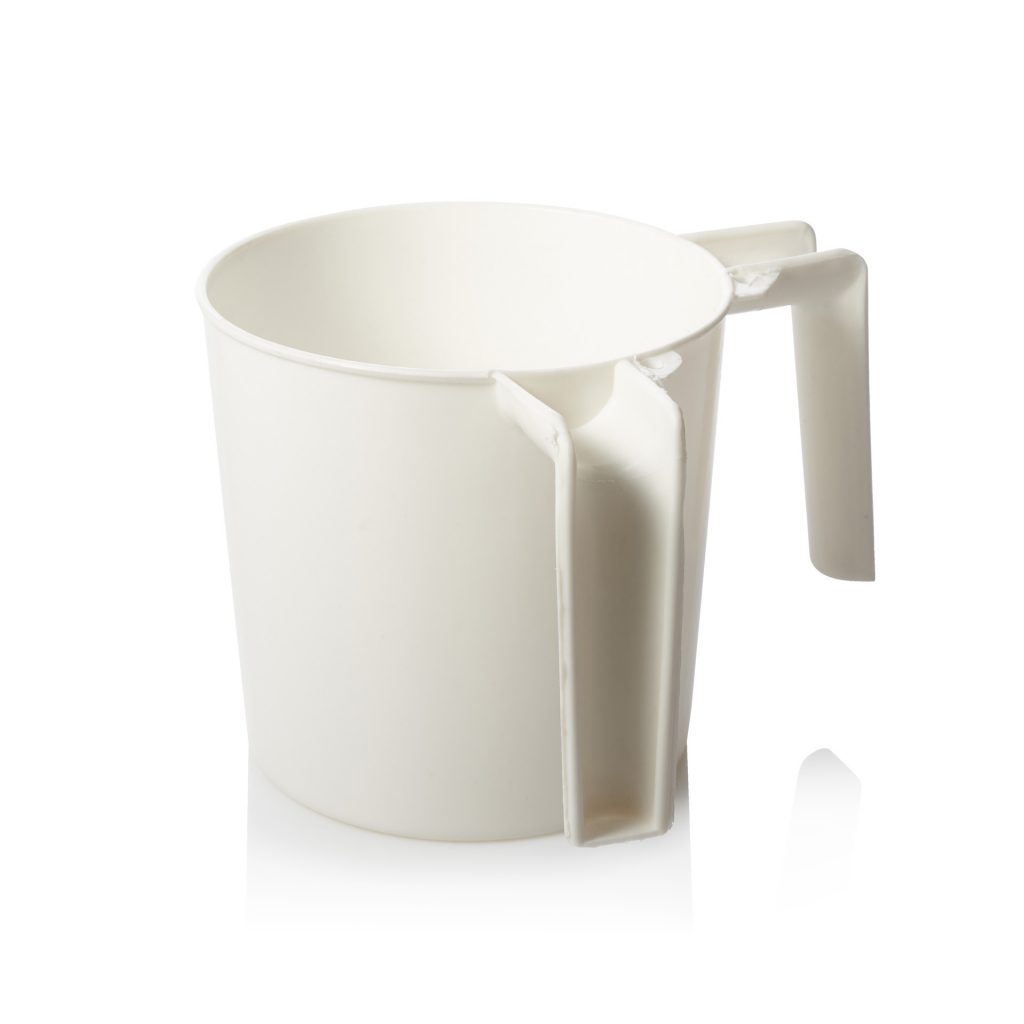Washing Cup
Israel, 21st century
Plastic
Museum Collection
Must Know
Traditionally, many Jews wash their hands and say a blessing before eating any meal that includes bread or matzah. The ritual, known as netilat yadayim, is typically done using a two-handled cup. There are various customs regarding how the water should be poured, but a common practice is to pour twice on the right hand followed by twice on the left.
The tradition requires this ritual even if your hands are clean. It is a way to pause and be reflective about what you are about to consume. After washing, the bracha is recited.
בָּרוּךְ אַתָּה ה׳ אֱלֹהֵינוּ מֶלֶךְ הָעוֹלָם אֲשֶׁר קִדְּשָׁנוּ בְּמִצְוֹתָיו וְצִוָּנוּ עַל נְטִילַת יָדַיִם
Blessed are You, Lord our God, King of the universe, who has sanctified us with Your commandments, and commanded us concerning the washing of the hands.
More Info
The tradition of netilat yadayim prior to eating bread originated with the rabbis of the Talmud . (tractate Shabbat 62b) It derives from various practices concerning ritual impurity from when the ancient temple stood in Jerusalem. The priests who performed the temple rituals were given gifts of oil, wine and wheat that could be eaten only after ritual washing. The ancient rabbis extended this practice to all Jews before eating meals. There are various other times when ritual hand washing is customary i.e. On Waking in the Morning, after a meal, and returning from a cemetery.
By placing the ubiquitous plastic washing cup in a glass museum case we raise the age old question, is there some forms of “art” that is higher than others. Our mere relocation of this washing cup from a sink to a museum case changes our perception of its utility and status, forcing us to look and contemplate it. It is an example of a readymade or found art, a term coined by the artist Marcel Duchamp in 1915 to describe prefabricated, often mass-produced objects isolated from their intended use and elevated to the status of art by the artist (this case curator) choosing and designating them as such.

